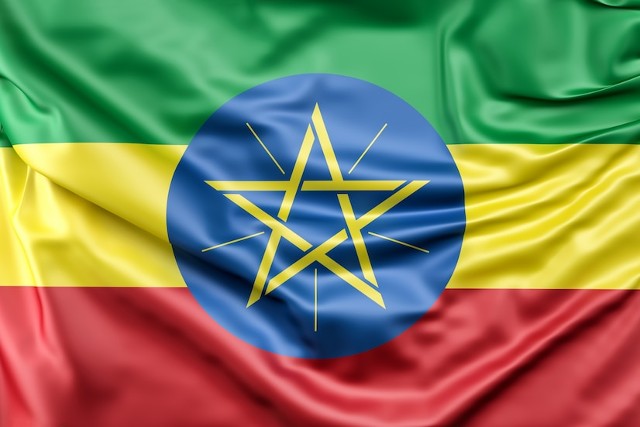The Ethiopian flag is a symbol of national pride and identity, reflecting the rich history and diverse culture of Ethiopia. Its distinctive colors and design elements have evolved over centuries, representing various historical and cultural milestones. This article explores the intricate history of the Ethiopian flag, its symbolism, and its significance to the Ethiopian people.
The Origins of the Ethiopian Flag
Ancient Ethiopia and Early Symbols
Ethiopia, one of the oldest nations in the world, has a history that dates back thousands of years. Early symbols used by Ethiopian kingdoms often included various emblems and insignias, reflecting the kingdom’s power and religious beliefs.
The Solomonic Dynasty
The Solomonic Dynasty, which claims descent from the biblical King Solomon and the Queen of Sheba, played a crucial role in shaping Ethiopia’s national symbols. During this period, the Lion of Judah emerged as a prominent symbol, representing the dynasty’s divine lineage and authority.
The Adoption of the Tri-Color Flag
The Reign of Emperor Menelik II
The modern Ethiopian flag, with its green, yellow, and red stripes, was formally adopted during the reign of Emperor Menelik II in the late 19th century. Menelik II is credited with unifying Ethiopia and modernizing the nation. The tricolor flag was first used in 1897, following the victory at the Battle of Adwa, where Ethiopian forces defeated the Italian invaders.
Symbolism of the Colors
- Green: Symbolizes the land and hope. It reflects Ethiopia’s agricultural heritage and the country’s lush highlands.
- Yellow: Represents peace and religious freedom. It signifies the harmony among Ethiopia’s diverse ethnic groups and religions.
- Red: Stands for strength and sacrifice. It honors those who fought for Ethiopia’s independence and sovereignty.
The Evolution of the Ethiopian Flag
The Lion of Judah Emblem
From 1897 until 1974, the Ethiopian flag featured the Lion of Judah in its center, symbolizing the Solomonic Dynasty and the Ethiopian Orthodox Church. This emblem highlighted the connection between the monarchy and the church, both of which played significant roles in Ethiopian society.
The Derg Regime and Socialist Symbolism
Following the overthrow of Emperor Haile Selassie in 1974, Ethiopia underwent significant political changes under the Derg regime. The Lion of Judah was replaced with a new emblem featuring a star and a cogwheel, representing socialism and the working class. This change reflected the Derg’s Marxist-Leninist ideology.
The Current Ethiopian Flag
In 1991, the Derg regime was overthrown, and Ethiopia transitioned to a federal democratic republic. The current flag, adopted in 1996, retains the traditional green, yellow, and red stripes but features a blue circle with a yellow pentagram in the center. The pentagram represents unity and the nation’s commitment to equality and democracy.
Cultural and Political Significance
National Identity and Unity
The Ethiopian flag is a powerful symbol of national identity and unity. Despite Ethiopia’s ethnic and religious diversity, the flag represents a shared heritage and collective aspirations. It is prominently displayed during national holidays, cultural festivals, and international events, fostering a sense of pride and belonging among Ethiopians.
Influence on Pan-Africanism
The Ethiopian flag has also had a significant influence beyond its borders. Its colors have been adopted by several African nations and liberation movements as a symbol of Pan-Africanism and anti-colonial struggle. Countries such as Ghana, Mali, and Senegal have incorporated the green, yellow, and red colors into their own national flags, inspired by Ethiopia’s successful resistance against colonialism.
The Flag in Rastafarianism
The Ethiopian flag holds special significance in the Rastafarian movement, which originated in Jamaica in the 1930s. Rastafarians view Ethiopia as their spiritual homeland and Emperor Haile Selassie as a messianic figure. The colors of the Ethiopian flag are frequently used in Rastafarian symbols, artwork, and religious practices.
Conclusion
The history of the Ethiopian flag is a testament to the nation’s resilience, cultural richness, and evolving identity. From its ancient origins to its current design, the flag has undergone significant transformations, each reflecting key historical and political changes. Today, the Ethiopian flag stands as a powerful symbol of unity, pride, and national sovereignty, inspiring not only Ethiopians but also people around the world who value freedom and independence.
FAQs
Q1: What is the origin of the Ethiopian flag?
A1: The Ethiopian flag has its origins in the late 19th century during the reign of Emperor Menelik II, who unified Ethiopia and introduced the green, yellow, and red tricolor flag after the victory at the Battle of Adwa in 1897.
Q2: What do the colors of the Ethiopian flag represent?
A2: The colors of the Ethiopian flag have specific symbolic meanings:
- Green: Represents the land and hope, reflecting Ethiopia’s agricultural heritage.
- Yellow: Symbolizes peace and religious freedom, indicating harmony among diverse ethnic groups and religions.
- Red: Stands for strength and sacrifice, honoring those who fought for Ethiopia’s independence and sovereignty.
Q3: How has the Ethiopian flag evolved over time?
A3: The Ethiopian flag has undergone several changes:
- Initially featured the Lion of Judah symbolizing the Solomonic Dynasty and the Ethiopian Orthodox Church.
- During the Derg regime (1974-1991), the Lion of Judah was replaced with a star and cogwheel emblem representing socialism.
- The current flag, adopted in 1996, retains the tricolor stripes and features a blue circle with a yellow pentagram in the center, symbolizing unity and democracy.
Q4: What is the significance of the Lion of Judah in the Ethiopian flag?
A4: The Lion of Judah symbol, used from 1897 to 1974, represented the Solomonic Dynasty’s claim to biblical lineage from King Solomon and the Queen of Sheba, as well as the Ethiopian Orthodox Church’s influence in society.
Q5: How did the Derg regime change the Ethiopian flag?
A5: The Derg regime, which came to power in 1974, replaced the Lion of Judah with an emblem featuring a star and cogwheel to reflect its Marxist-Leninist ideology and emphasize socialism and the working class.
Q6: What does the current emblem on the Ethiopian flag represent?
A6: The current emblem, a blue circle with a yellow pentagram, symbolizes unity and Ethiopia’s commitment to equality and democracy. This design was adopted in 1996 following the overthrow of the Derg regime.
Q7: How has the Ethiopian flag influenced other African nations?
A7: The Ethiopian flag’s colors (green, yellow, and red) have been adopted by several African countries and liberation movements as symbols of Pan-Africanism and anti-colonial struggle. Nations like Ghana, Mali, and Senegal have incorporated these colors into their own national flags.
Q8: What is the significance of the Ethiopian flag in Rastafarianism?
A8: The Ethiopian flag holds special significance in the Rastafarian movement, which views Ethiopia as a spiritual homeland and Emperor Haile Selassie as a messianic figure. The flag’s colors are commonly used in Rastafarian symbols, artwork, and religious practices.
Q9: Why is the Ethiopian flag a symbol of national unity?
A9: Despite Ethiopia’s ethnic and religious diversity, the flag represents a shared heritage and collective aspirations. It fosters a sense of pride and belonging among Ethiopians and is prominently displayed during national holidays, cultural festivals, and international events.
Q10: How does the Ethiopian flag reflect the country’s historical and political changes?
A10: The flag’s design has evolved in response to key historical and political events, such as the unification under Emperor Menelik II, the Derg regime’s socialist revolution, and the establishment of a federal democratic republic in 1991. Each iteration of the flag reflects the values and ideologies of the time.
These FAQs provide a comprehensive overview of the key points discussed in the article “The History of the Ethiopian Flag: An Exploration.”


